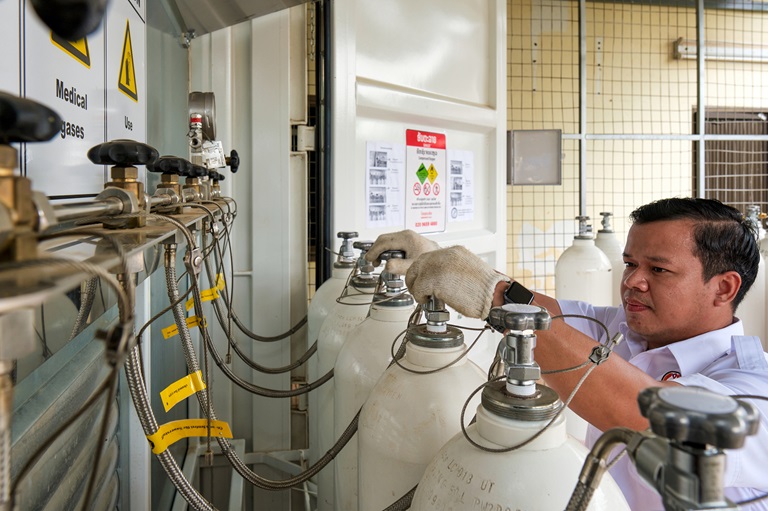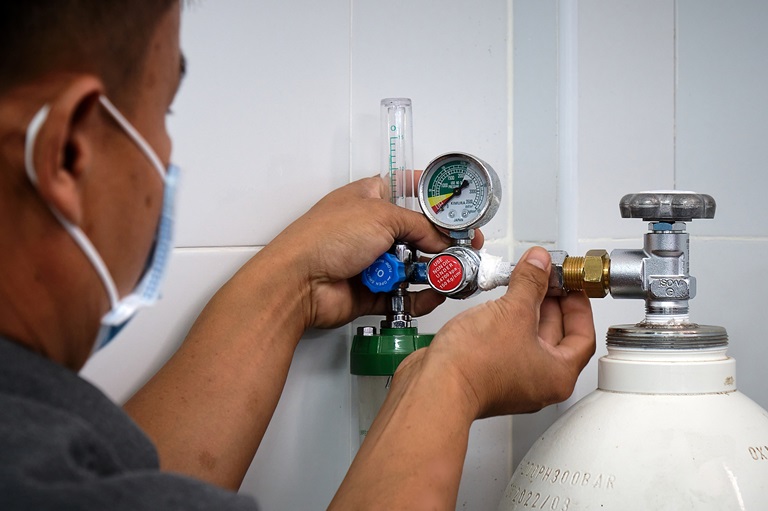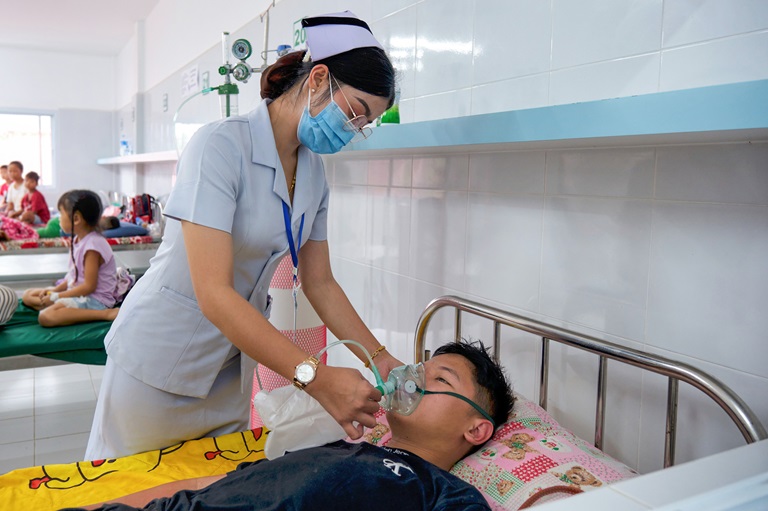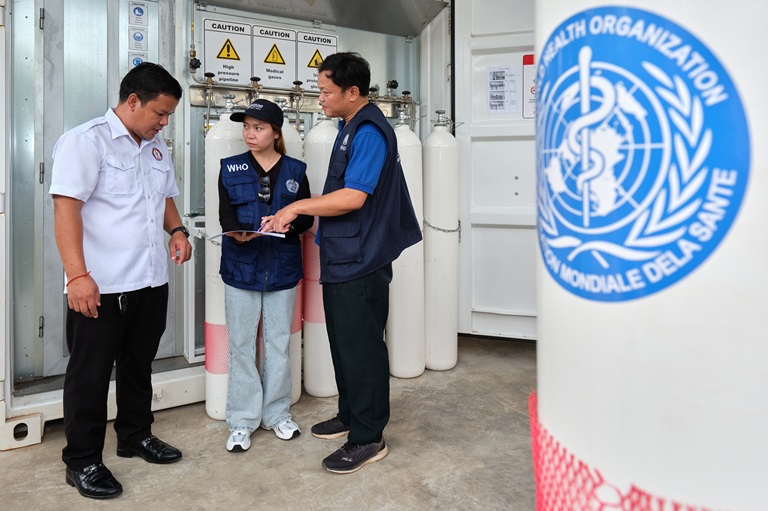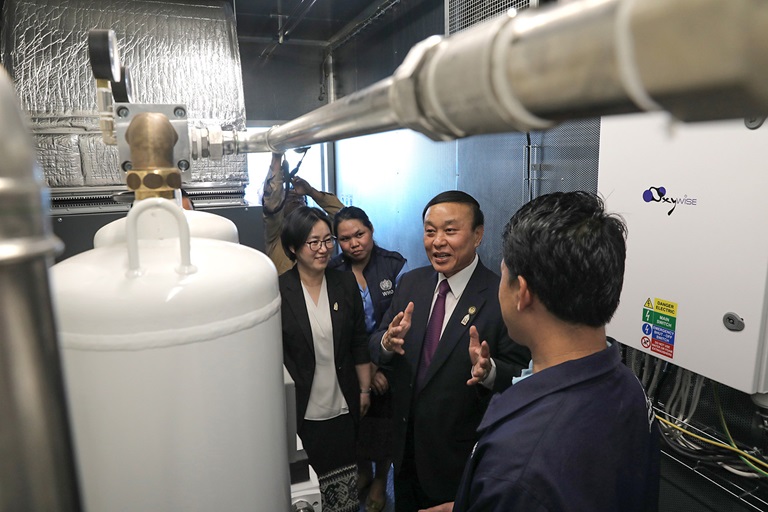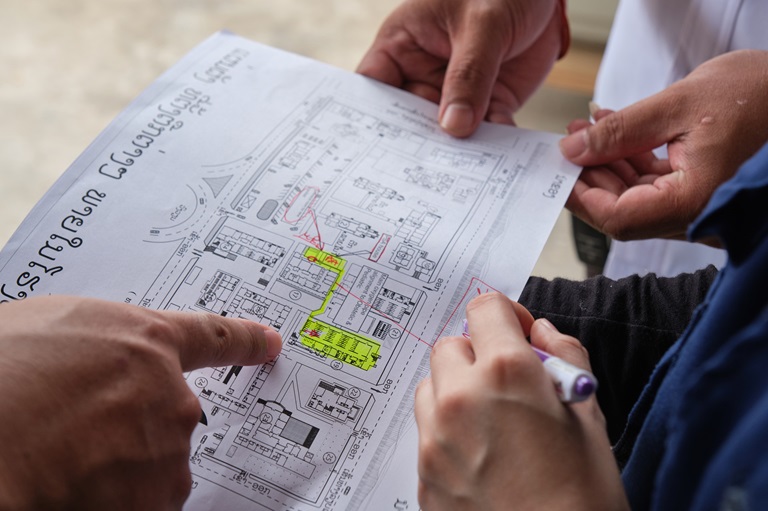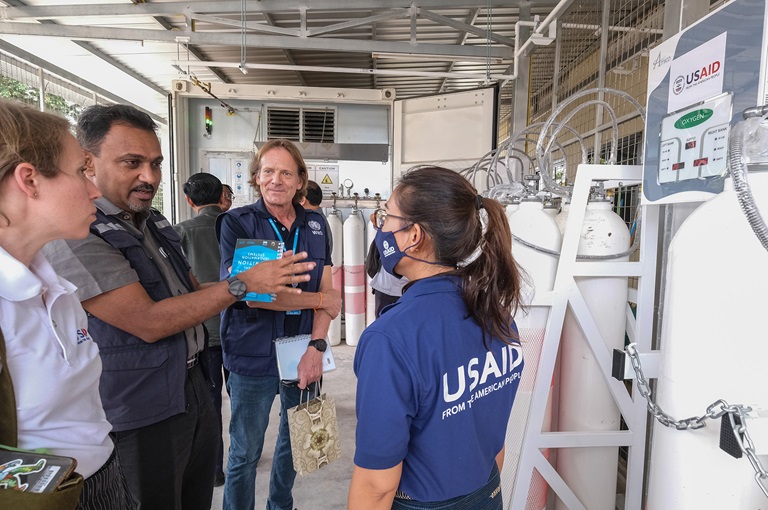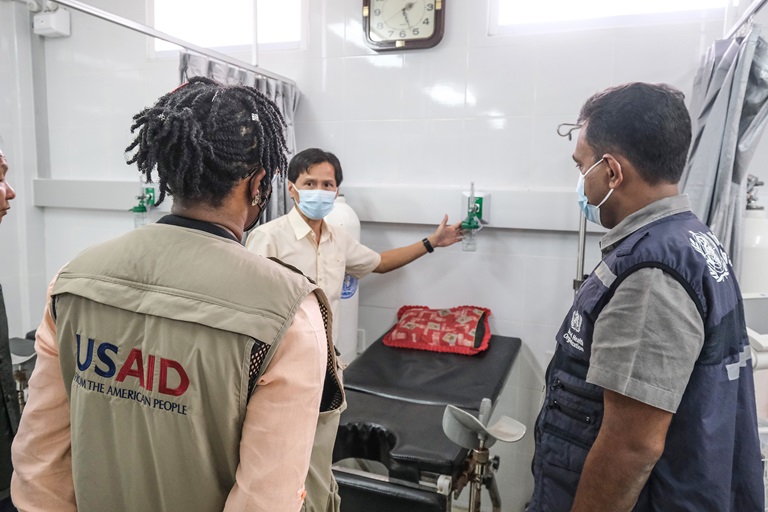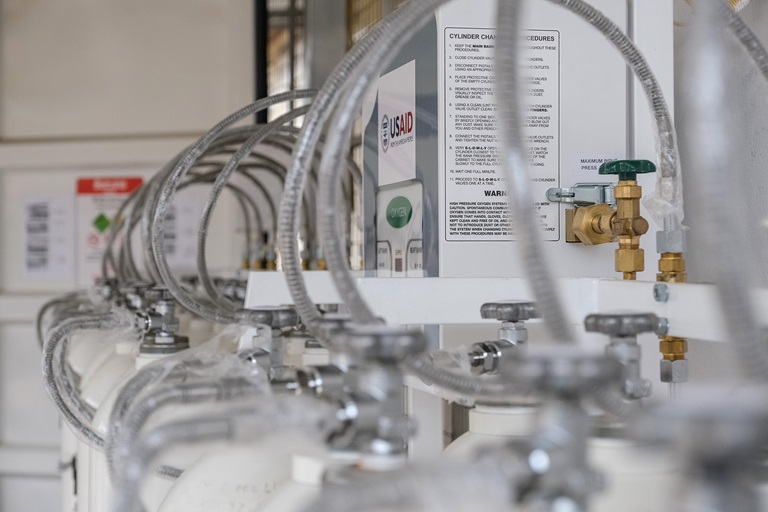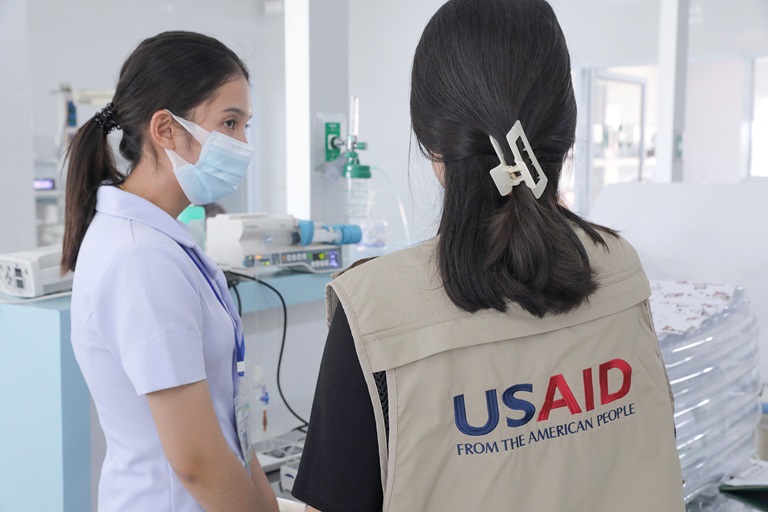
20 May 2024 | Spotlight
Breathing life: Strengthening oxygen access in Lao PDR
While border closures were a major issue, volatile and increasing costs, and ensuring sufficient supply reached areas most in need were existing issues exacerbated by the pandemic,
Medical oxygen, vital for surgery, trauma care, respiratory issues, and maternal and child care, became a symbol of life and death during the peak of the COVID-19 pandemic.
In Lao PDR, as in many nations, unpredictable oxygen supply (often from neighbouring countries) and substantial gaps in distribution networks and hospital delivery systems – particularly at a provincial level – raised awareness of the urgent need for sustainable solutions to maintain this life-saving resource.
“While border closures were a major issue, volatile and increasing costs, and ensuring sufficient supply reached areas most in need were existing issues exacerbated by the pandemic," said Dr Khamsay Dethleuxay, Director General of Department of Healthcare and Rehabilitation at the Ministry of Health. “ We needed both a short-term and long-term solution.”
Fortunately, significant investments and collaboration are transforming the situation.
Amid the pandemic, United States Agency for International Development (USAID) support to the World Health Organization (WHO) provided a stop-gap life-saving measure.
Alongside other critical equipment, 206 million litres of cylinder-based oxygen were provided to high-risk COVID-19 patients, ensuring oxygen supply security in all 23 COVID-19 treatment facilities across the country.
“We knew how important and urgent this support was; to ensure, ensuring lifesaving oxygen reached those most in-need; promptly, fast,” said USAID Laos Country Director Representative Michael Ronning, “while at the same time allowing us to consider longer-term solutions.”
This intervention was crucial in stabilizing immediate healthcare system needs during the pandemic's peak.
In the longer-term, however, more ground-breaking solutions are underway – with Savannakhet Provincial Hospital providing the best example.
One of Lao PDR's largest provincial healthcare facilities, the hospital is one of three provincial facilities – alongside Oudomxay and Luang Prabang – to receive their own containerized medical oxygen plant as part of a 33.5 billion Lao Kip (US$ 1.5 million) donation from WHO in 2023.
These plants enable hospitals to produce their own oxygen for the first time – up to 81 000 cylinders per year – to ensure a reliable supply, reduce reliance on external supplies, and lower purchasing costs.
They provide life-saving support during surgery, for maternal and child care, and for patients with heart failure, asthma or pneumonia. Collectively, the plants will ensure enough oxygen is produced to assist tens of thousands of patients each year.
WHO Representative, Dr Tim Armstrong, said: “This support ensures more people, particularly vulnerable groups like the elderly, pregnant women and newborns, return to their loved ones.”
“Having dedicated oxygen plants means these provincial hospitals are well-prepared to handle medical crises and emergencies effectively and affordably.”
“It also provides an opportunity to improve electrical and engineering infrastructure and hospital staff capacity.”
Along with the oxygen production and refilling systems, support included construction of facilities, backup power generators, three years’ worth of spare parts, 200 cylinders for each site, and training for technicians at each location.
But in Savannakhet, this oxygen lifeline has expanded further, thanks to support from USAID.
In parallel with construction of the oxygen plant at Savannakhet Provincial Hospital, installation of a USAID-supported, WHO-implemented oxygen piping and distribution systems means oxygen is now directly, continuously, and readily available at the bedside of high-risk patients in critical wards like the emergency room, intensive care unit, cardiology, surgical and neonatal units.
The nearly 2.5 billion Lao Kip (US$ 120 000) system includes a comprehensive oxygen distribution network, more than 300 metres of piping, a central control unit, two backup systems, and 55 outlets.
The system is expected to support over 3 200 high-risk or vulnerable patients every year.
Highlighting the intervention, USAID’s Michael Ronning said: “USAID believes access to essential healthcare is a fundamental human right.”
“Supporting the expansion of oxygen access at Savannakhet Provincial Hospital is a testament to our commitment to the Lao people and their well-being and our collaborative partnership with WHO. This life-preserving system will have a lasting impact on countless families beyond COVID-19 needs and strengthen the healthcare system for generations to come."
“The expanded oxygen system is a game-changer,” commented Dr Chanthala Phamisith, Savannakhet Provincial Hospital Director.
“Previously, delivering oxygen to critical patients required moving oxygen tanks around the hospital, taking time and resources. Now, the new oxygen piping system has helped reduce costs and ensured high-risk patients can receive the oxygen they need immediately, saving lives and improving their chances of recovery.”
Support from other partners has also played a crucial role in expanding oxygen infrastructure and capability across the country.
In addition to CHAI’s construction of an oxygen plant, the Korea Foundation for International Healthcare (KOFIH) offered training and support in biomedical engineering to enhance the skills of the hospital staff in Savannakhet.
“This support is one part of our comprehensive capacity building approach for healthcare facilities across Lao PDR,” said KOFIH Country Director Hyunkyong Kim. “We aim to ensure hospitals are equipped and self-reliant when it comes to delivering health for all.”
Xayasith Phomchaleun, a biomedical engineer at the hospital, said: “I feel proud being able to help patients access safe, accurate medical equipment and contribute to hospital management strengthening here at Savannakhet Provincial Hospital.”
While Savannakhet Provincial Hospital now has the most advanced system, other provincial hospitals are also making significant advances, guided by the new National Oxygen Strategy.
The new production capability means they can also support other healthcare facilities in their province, making essential medical services more accessible for patients and reducing dependency on imported oxygen.
During visits to the Luang Prabang and Savannakhet plants, Minister of Health HE Dr Bounfeng Phoummalaysith noted: “Establishing oxygen plants in Luang Prabang and Oudomxay provincial hospitals is crucial for strengthening healthcare infrastructure, improving emergency response capabilities, enhancing the overall quality of healthcare in both provinces and reducing treatment costs.”
“Expanding oxygen access at Savannakhet Provincial Hospital is a critical step forward in ensuring all Lao citizens receive the quality healthcare they deserve… This life-saving initiative will bring assurance to families knowing their loved ones have immediate access to this essential life support during the most critical situations, and we greatly appreciate USAID’s significant support.”
The development of oxygen infrastructure in multiple provincial hospitals across the country is a testament to what collaborative efforts can achieve.
These partnerships are instrumental in enhancing healthcare capabilities in Lao PDR and providing the groundwork for healthcare sustainability.
The new oxygen infrastructure not only supports greater advancement in healthcare for the region but also symbolizes a broader goal of achieving universal health coverage in Lao PDR and highlights the importance of a resilient health system that provides health for all.
Oxygen supply has been one of WHO’s top priorities for support for Lao PDR during and after the COVID-19 pandemic, working in close coordination with partners, including USAID and KOFIH. This includes providing medical oxygen equipment and oxygen itself, training for healthcare workers, technical assistance and developing treatment guidelines as part of longer-term efforts to improve healthcare services and build a resilient and sustainable health system.
Photographer Credits: WHO/Bart Verweij; WHO/Soudaphone Viravongsa; WHO/Will Seal; WHO/Somlith Khounpaseuth



